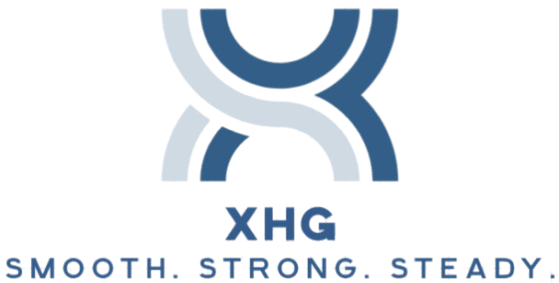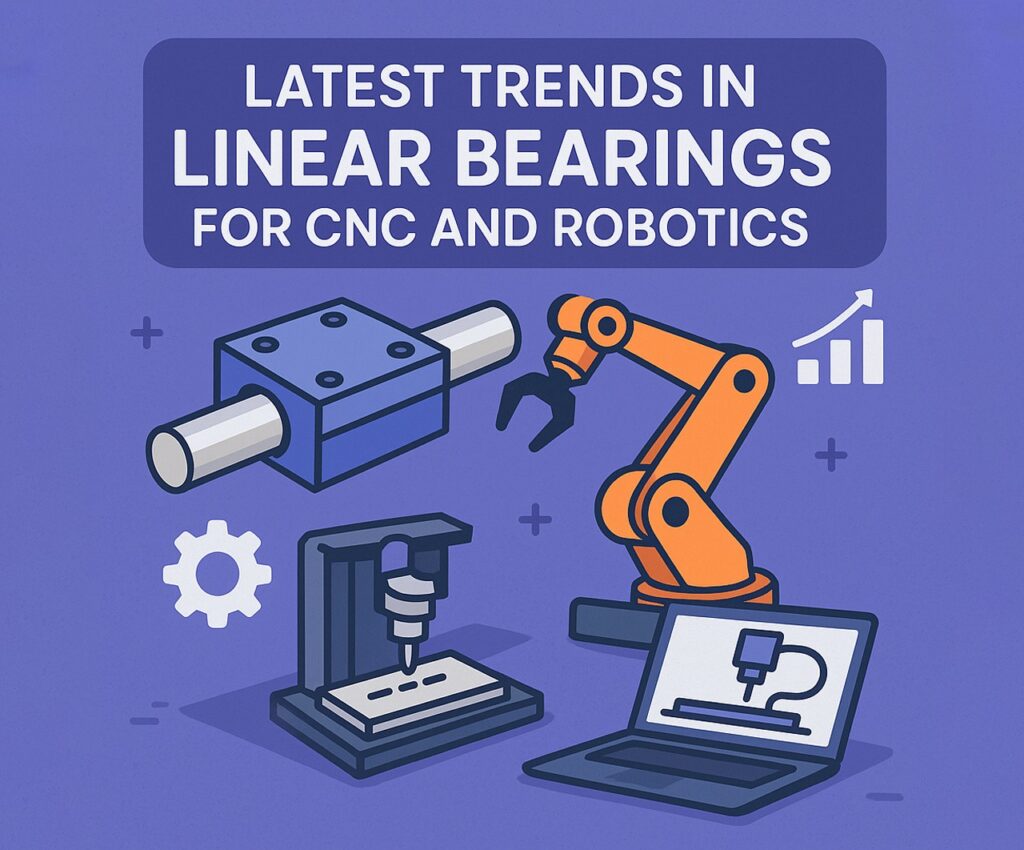As CNC machines and robotic systems become faster, smarter, and more compact, the components behind their precision must keep up. That’s why engineers and machine designers are turning their attention to linear bearing rail, linear slide bearings, and linear guides and bearings. These technologies are fundamental to the motion systems that power automation and advanced manufacturing. Today, they’re not just evolving—they’re transforming. Know More
In this article, we explore the latest innovations in linear bearing rail, improvements in linear slide bearings, and how new design principles are reshaping linear guides and bearings for CNC and robotics. Whether you’re an OEM, machinist, or systems integrator, understanding these shifts will help you future-proof your motion platforms.
The Foundation: How Linear Bearings Drive CNC and Robotics
At their core, linear bearings provide smooth, accurate, and repeatable motion along a single axis. In CNC machining, this means precision cutting, drilling, and engraving. In robotics, it’s about flexible positioning, motion control, and responsiveness.
- A linear bearing rail offers a rigid foundation for guided movement
- Linear slide bearings enable low-friction motion under varying loads
- Linear guides and bearings systems integrate housing, rails, and carriages into a seamless assembly
Modern CNC and robotics demand tighter tolerances and greater speeds—exactly where innovation is focused today.
1. Smart Bearings: Embedded Sensors and Data Tracking
The era of Industry 4.0 is ushering in smarter linear motion systems. Bearings are no longer passive components. Today’s linear guides and bearings are increasingly equipped with:
- Vibration sensors to detect wear or misalignment
- Temperature monitoring for predictive maintenance
- Load sensors to prevent overload failures
These data-enhanced bearings send feedback to CNC or robotic controllers in real time, improving uptime and reducing costly machine failures.
Example: A linear bearing rail on a CNC router might now come with integrated thermal sensors that alert the operator to excess heat from misalignment before it causes permanent damage.
2. Miniaturization and High Load Capacity
In robotic arms and compact CNC mills, space is at a premium. Yet, performance can’t be sacrificed. This is driving two trends:
- Thinner rail profiles with optimized material strength
- Micro-sized linear slide bearings that maintain load capacity in a smaller form
These innovations are especially useful in:
- Collaborative robots (cobots)
- 3D printers
- Desktop CNC systems
Smaller form factors in linear guides and bearings enable flexible equipment design without compromising accuracy.
3. Advanced Materials and Coatings
Traditional steel bearings are evolving. New alloys and surface treatments now offer:
- Self-lubricating properties (dry operation in clean environments)
- Anti-corrosive coatings for marine or medical settings
- Hardened ceramic inserts for ultra-low friction and extended life
This is especially critical for linear slide bearings used in cleanrooms, labs, or outdoor robotics.
Pro tip: Choose a coated linear bearing rail for applications where moisture or dust is unavoidable. It could double the bearing’s lifespan.
4. Integration with Actuators and Drives
Today’s motion systems are becoming modular. Instead of piecing together rails, carriages, motors, and encoders separately, manufacturers now offer fully integrated packages:
- Motorized linear guides and bearings
- Slide units with built-in ball screws or belt drives
- Plug-and-play linear modules
This approach reduces installation time, improves alignment, and simplifies maintenance. For CNC retrofits or robotic end-effectors, integrated linear slide bearings provide instant performance upgrades.
5. Improved Load Distribution and Rigidity
Modern machining and pick-and-place applications demand high rigidity to handle sudden acceleration, deceleration, and cutting forces.
Innovations in linear bearing rail design now include:
- Dual contact points for better force distribution
- Multi-row recirculating ball paths
- Floating guide rails for absorbing deflection
These developments allow linear guides and bearings to operate under higher loads without introducing backlash or vibration—both of which can compromise product quality.
6. Customization by Application
Mass production is giving way to tailored solutions. OEMs now demand linear motion products that are purpose-built.
Customizations include:
- Length-specific linear bearing rail systems
- Low-profile linear slide bearings for embedded machines
- High-damping units for robotic systems handling irregular loads
Whether it’s a laser cutter, packaging line, or automated inspection machine, there are now specialized linear guides and bearings designed to meet those demands head-on.
7. Enhanced Lubrication Systems
Maintenance remains one of the biggest challenges in keeping automation systems at peak performance. New solutions address this with:
- Lubrication reservoirs inside bearing blocks
- Long-life grease that extends service intervals
- Sealed, maintenance-free linear bearing rail systems
In robotics, especially mobile or autonomous platforms, these features reduce manual intervention. For CNC, they mean fewer disruptions on the shop floor.
8. Noise and Vibration Dampening
High-speed CNC tools and fast-moving robotic joints can produce unwanted vibration. New linear slide bearings use engineered plastics, soft damping pads, and hybrid materials to minimize this.
Benefits include:
- Reduced wear on mechanical parts
- Smoother machine movement
- Better output precision
In environments where sound matters (like med-tech labs or electronics manufacturing), quiet linear guides and bearings improve both human and mechanical performance.
9. Sustainability and Recyclability
Sustainability is now a design requirement. Manufacturers of linear bearing rail and linear slide bearings are introducing:
- Recyclable aluminum housings
- Biodegradable lubricants
- Energy-efficient motion profiles
This makes automation more eco-friendly and aligns with global standards like RoHS and REACH. For industries aiming to lower their carbon footprint, choosing sustainable linear guides and bearings is an easy win.
Where the Industry Is Headed
The linear bearing market is trending toward:
- Smarter components with real-time diagnostics
- Lighter and stronger designs for compact robotics
- Plug-and-play integration for rapid deployment
Expect linear bearing rail systems to become more modular, linear slide bearings to offer tool-free replacements, and linear guides and bearings to feature more AI-assisted health monitoring.
Final Thoughts
Linear motion systems are the heartbeat of CNC and robotic platforms. As these machines get faster, smarter, and more compact, the pressure is on to deliver high-performance linear bearing rail, ultra-smooth linear slide bearings, and durable linear guides and bearings that match today’s pace of innovation.
Whether you’re designing the next generation of robotic arms or upgrading your CNC mill, staying on top of these trends will help you make smarter choices, reduce downtime, and build machines that outperform the competition.

